 2007 Hyundai i30 I Dimensions, Size & Specs
2007 Hyundai i30 I Dimensions, Size & SpecsMeasurements of the 2007 Hyundai i30 I, engineered for optimal performance and comfort
| Dimensions | |
|---|---|
| Length: | 4245 mm167.1 in13.9 ft |
| Width: | 1775 mm69.9 in5.8 ft |
| Height: | 1480 mm58.3 in4.9 ft |
| Trunk Capacity: | 340 liter12.0 cu ft |
| Trunk Capacity (Max): | 1200-1250 liter42.4-44.1 cu ft |
| Weight Specifications | |
| Curb Weight: | 1193-1429 kg2630-3150 lbs |
| Maximal permitted Weight: | 1720-1900 kg3792-4189 lbs |
| Tire Specifications | |
| Rims Size: |
|
| Tire Sizes: |
|
The Hyundai i30 I, produced from 2007 to 2010, is a compact hatchback that combined practical dimensions with efficient use of space, making it a popular choice in its segment. Measuring 4245 mm (167.1 inches) in length, this hatchback offered a balanced footprint suitable for both urban driving and longer trips. Its width stands at 1775 mm (69.9 inches), while the height reaches 1480 mm (58.3 inches), giving it a compact yet spacious stance. The curb weight ranges between 1193 kg (2,630 lbs) and 1429 kg (3,150 lbs), depending on configuration, accommodating an overall maximum weight from 1720 kg (3,792 lbs) up to 1900 kg (4,188 lbs). This allowed for a practical balance of handling, stability, and fuel efficiency. Inside, the Hyundai i30 I offered a versatile luggage capacity starting at 340 liters (12 cubic feet), which could be expanded impressively to between 1200 and 1250 liters (42.4 to 44.1 cubic feet) with the rear seats folded, catering well to families and those needing additional cargo space. The vehicle came equipped with 15-inch rims, paired with tire sizes such as 185/65 R15, 205/55 R15, and 185/65 R15 H, contributing to its composed ride quality and road grip. Overall, the Hyundai i30 I stood out as a compact hatchback with a practical size, making it a versatile option for drivers seeking a combination of efficient dimensions, ample space, and reliable performance during the late 2000s.
Discover the standout features that make the 2007 Hyundai i30 I a leader in its class
Have a question? Please check our knowledgebase first.
The Hyundai i30 I, produced between 2007 and 2010, features a compact hatchback design with a length of 4245 mm (167.1 inches), a width of 1775 mm (69.9 inches), and a height of 1480 mm (58.3 inches). These dimensions give the i30 I a balanced profile that is spacious enough for urban driving and practical parking, yet compact enough to maneuver easily through tighter city streets and parking spaces.
The curb weight of the Hyundai i30 I ranges from 1193 kg to 1429 kg (approximately 2632 to 3149 pounds), depending on the specific trim and equipment. The maximum gross weight ranges between 1720 kg and 1900 kg (about 3794 to 4189 pounds). These weights impact the car's fuel efficiency, acceleration, and handling. A lighter curb weight contributes to better fuel economy and nimble handling, while the maximum weight informs the load limits for safe operation, which is essential when carrying passengers and cargo.
The Hyundai i30 I offers 340 liters (approximately 12 cubic feet) of luggage capacity with the rear seats in the upright position, making it suitable for everyday groceries and small bags. When the rear seats are folded down, the luggage space expands substantially to between 1200 and 1250 liters (42.4 to 44.1 cubic feet), allowing for larger or bulkier items such as sports equipment, luggage for long trips, or even small furniture pieces, providing excellent versatility for a compact hatchback.
The Hyundai i30 I comes equipped with 15-inch rims and tires that range between sizes 185/65 R15, 205/55 R15, and 185/65 R15 H, depending on the trim level and country specifications. These tire sizes allow for a good balance between ride comfort and handling precision. Smaller 15-inch wheels typically absorb road imperfections better, contributing to a smoother ride, while the specific tire profiles ensure adequate grip and fuel efficiency, making the i30 I practical for daily use.
Yes, the Hyundai i30 I, with its length of 4245 mm (167.1 inches), width of 1775 mm (69.9 inches), and height of 1480 mm (58.3 inches), fits comfortably into a standard residential garage. Most standard garages have door widths of at least 2400 mm (94.5 inches) and lengths of around 5500 mm (216.5 inches), which provides ample clearance for the i30 I to park easily without difficulty, leaving enough room for opening doors and walking around the vehicle.
The Hyundai i30 I, launched in 2007, was designed as Hyundai's first global C-segment model, which means it had no direct predecessor under the i30 name in many markets. However, compared to earlier Hyundai hatchbacks like the Hyundai Coupe or smaller models, the i30 I was larger and more refined, with a length of 4245 mm and width of 1775 mm, offering more interior and cargo space. This advancement in size supported Hyundai's strategy to compete in the highly competitive European hatchback segment.
The Hyundai i30 I, with its length of 4245 mm and width of 1775 mm, is similar in size to the first-generation Ford Focus (approximately 4265 mm long) and Volkswagen Golf Mk5 (around 4255 mm long). While all three compete closely in the compact hatchback segment, the i30 I offers a competitive luggage capacity with 340 liters standard and up to 1250 liters with seats folded, comparable to these rivals. Feature-wise, the i30 focused on value with solid build quality and competitive equipment, making it a strong alternative to more established European models.
While specific interior dimensions like legroom and headroom vary slightly by trim and seating configuration, the Hyundai i30 I is designed to comfortably seat five passengers, with its 1775 mm width allowing adequate shoulder space for front and rear occupants. The 1480 mm height helps ensure good headroom for most adults. The ergonomically designed cabin and well-laid out controls enhance comfort and usability, making it practical for both city commutes and longer journeys.
The Hyundai i30 I was offered with a range of petrol and diesel engines, including 1.4L, 1.6L, and 2.0L petrol options, as well as 1.6L and 2.0L diesel units. Fuel efficiency varies depending on the engine and transmission, but generally ranged from about 5.5 to 7.5 liters per 100 kilometers (42 to 31 mpg US) in mixed driving conditions. The engines provide a good balance of performance and economy for a compact hatchback, and the availability of diesel variants made the i30 I popular for longer-distance drivers in Europe.
For its generation, the Hyundai i30 I was well-equipped in terms of safety and technology. It typically included standard features like ABS brakes, multiple airbags, and stability control in higher trims. Technologically, the i30 I offered practical options such as air conditioning, electric windows, and an audio system with CD player. Some models also featured Bluetooth connectivity and cruise control, which were relatively advanced for a compact hatchback during the late 2000s, enhancing the driving experience.
Discover similar sized cars.

| Production: | 2004-2010 |
|---|---|
| Model Year: | 2004 |
| Length: | 4170-4223 mm164.2-166.3 in |
| Width: | 1892 mm74.5 in |
| Height: | 1442 mm56.8 in |
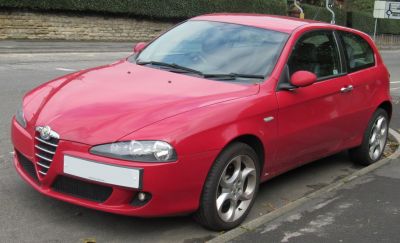
| Production: | 2004-2010 |
|---|---|
| Model Year: | 2004 |
| Length: | 4170-4223 mm164.2-166.3 in |
| Width: | 1892 mm74.5 in |
| Height: | 1442 mm56.8 in |
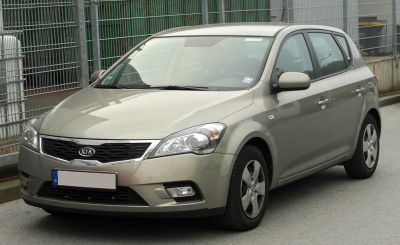
| Production: | 2009-2012 |
|---|---|
| Model Year: | 2009 |
| Length: | 4235 mm166.7 in |
| Width: | 1790 mm70.5 in |
| Height: | 1480 mm58.3 in |
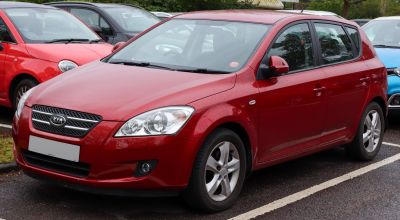
| Production: | 2007-2009 |
|---|---|
| Model Year: | 2007 |
| Length: | 4235 mm166.7 in |
| Width: | 1790 mm70.5 in |
| Height: | 1480 mm58.3 in |
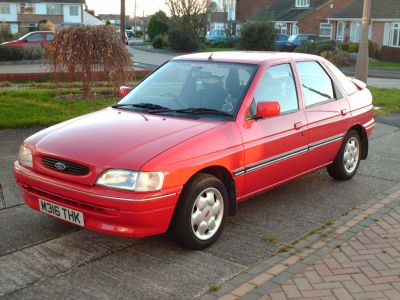
| Production: | 1991-1996 |
|---|---|
| Model Year: | 1993 |
| Length: | 4036-4211 mm158.9-165.8 in |
| Width: | 1692-1738 mm66.6-68.4 in |
| Height: | 1364-1450 mm53.7-57.1 in |

| Production: | 2008-present |
|---|---|
| Model Year: | 2008 |
| Length: | 4180 mm164.6 in |
| Width: | 1755 mm69.1 in |
| Height: | 1460 mm57.5 in |
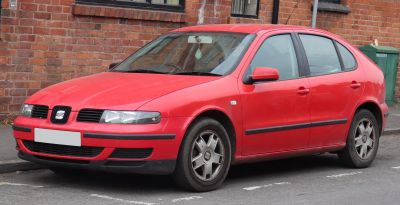
| Production: | 1999-2006 |
|---|---|
| Model Year: | 1999 |
| Length: | 4185 mm164.8 in |
| Width: | 1742 mm68.6 in |
| Height: | 1439 mm56.7 in |
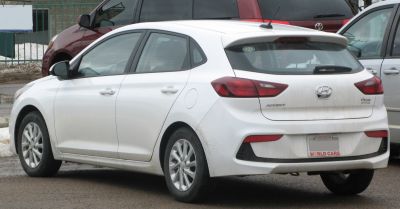
| Production: | 2018-present |
|---|---|
| Model Year: | 2018 |
| Length: | 4185 mm164.8 in |
| Width: | 1729 mm68.1 in |
| Height: | 1450 mm57.1 in |
